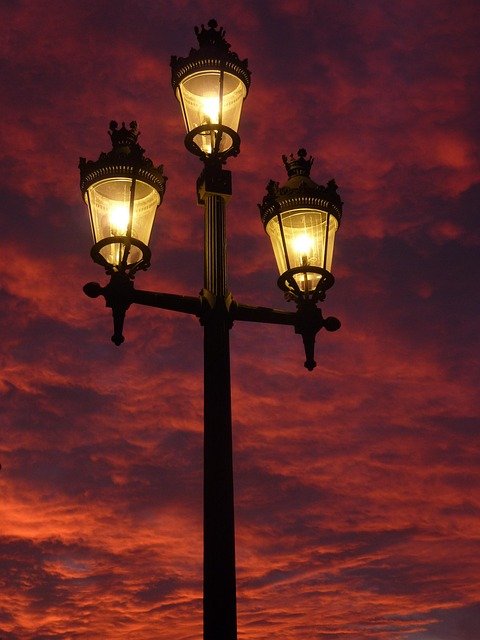Introduction
Have you ever noticed your streetlights turning on too late in the evening or lingering on too long into the morning? These seemingly minor delays can lead to:
- Reduced safety in low-light transition periods
- Unnecessary energy consumption
- Resident complaints
- Municipal compliance issues
In Latin America, where changing weather, cloud cover, and latitude variability affect ambient light levels, the risk of false triggering or delayed response in photocontrols becomes even more pronounced.
Let’s explore the causes and solutions behind this overlooked yet critical issue, and how you can solve it with reliable smart outdoor lighting components.
The Solution: What is That Smart Engineering Behind Photocontrols That Actually Work?
Modern photocontrols are more than just simple light sensors. They’re engineered systems that intelligently manage how lights respond to dusk and dawn, especially under fluctuating environmental conditions.
1. Zero-Crossing Detection: How Precision Switching with Electrical Protection Works?
One of the key issues in delayed lighting response is inrush current, a sudden spike of electricity when the lights turn on at arbitrary points in the AC cycle. This leads to:
- Wear on relays
- Premature failure
- Delayed activation times
That’s where Zero-Crossing Detection plays a game-changing role.
Lead-Top’s photocontrol models such as LT134, LT154, and LT124 are equipped with Zero-Crossing Switching technology.

- Reduces contact arcing
- Extends switch lifespan to 10,000+ ON/OFF cycles
- Supports high inrush current common with LED drivers
- Prevents energy spikes on grid startup
For municipal bidding projects that require long-term electrical reliability and low maintenance, this is a non-negotiable feature.
2. What Is Fail Mode ON: How It Ensures Lighting Safety, Even When Things Go Wrong
Imagine a critical intersection going dark because the photocontrol failed. That’s more than an inconvenience, it’s a safety hazard.
Most traditional systems fail in the OFF state. But Lead-Top photocells like LT104, LT124L, and LT210A are designed to fail in ON mode.

- Critical public zones stay illuminated during photocell failures
- Continuous lighting on highways, parks, and plazas
- Increased trust in city infrastructure
This feature is crucial in high-risk zones or regions prone to lightning, power surges, or frequent grid fluctuations, ensuring critical areas like highways, parks, and public plazas stay illuminated in the event of malfunction.
How Fast-Acting Response Time of 2 to 5 Seconds Help?
Another reason why lights are delayed at dusk or dawn? Cheap or generic photo controls with poorly designed response systems. Investing in a durable photoelectric sensor with weatherproof housing ensures reliable performance across all conditions.
Lead-Top’s models use intelligent time delay circuits to ensure activation occurs within 2–5 seconds, striking the right balance between speed and stability.
- No activation from false shadows (birds, passing cars, fog)
- Turns on consistently at 10–16 lux, ideal for urban settings
- Maintains proper behavior even in foggy, tropical, or rainy climates
How Lead-Top Is Built for Harsh Environments: Latin America and Beyond
Outdoor lighting must endure extreme weather and environmental conditions, especially in Latin America where:
- Brazil’s humidity causes corrosion
- Colombia’s altitudes challenge power consistency
- Argentina’s dust and voltage fluctuations push systems to the limit
That’s why Lead-Top’s photocontrols feature:
| Feature | Benefit |
| IP66/IP67 Weatherproofing | Protection against dust, rain, humidity |
| UV-resistant polycarbonate housing | Withstands intense sunlight |
| ANSI C136.10 & UL773 | Meets global safety and performance standards |
If you’re sourcing smart outdoor lighting, make sure the product has these protective standards in place.
Why It Matters to You
If you’re a lighting contractor, urban planner, or electrical importer, here’s what smart photocontrols offer:
Fewer false failures mean fewer night time service calls. Zero-crossing and delay logic also reduce long-term wear and tear. Technicians should also verify that each photocontrol receptacle is clean, sealed, and properly mounted.
Durable components and surge protection translate into longer operational life, reducing replacements.
Easier Success in Public Lighting Tenders
Modernized lighting systems with UL/ANSI certifications are more competitive in public lighting tenders, especially those prioritizing energy efficiency and safety.
Accurate light response means lights aren’t wasting power by staying on too long. Energy savings can reach 40–60%, especially with LED retrofits.

Bonus: What to Look for in a Quality Photocontrol?
Use this checklist when evaluating photocells for your next municipal lighting project:
| Feature | Why It Matters |
| Zero-Crossing Detection | Prevents inrush surges, increases longevity |
| Fail Mode ON | Lights stay on during photocell failure |
| Intelligent Delay Logic | Avoids flickering or false triggering |
| Surge Protection (10KV/20KA) | Withstands lightning and grid instability |
| UL / ANSI / CE Certifications | Ensures compliance and safety |
| UV & IP66 Housing | Enables outdoor use in harsh conditions |
| Custom Branding Available | Ideal for OEM & municipal identity |
A mid-sized city in Colombia experienced chronic delays and frequent failures with their older lighting systems. They replaced 3,500 outdated photocontrols with Lead-Top smart models.
- Energy usage dropped by 38%
- Maintenance calls decreased by 70%
- Night-time visibility complaints hit zero
- The city secured new funding from federal infrastructure grants due to its municipal compliance upgrade
This kind of ROI is why modern cities across Latin America are turning to standardized, intelligent lighting systems.
Typical Photocontrol vs. Lead-Top Smart Unit
| Parameter | Conventional Photocell | Lead-Top Smart Photocell |
| Activation Delay | 10–20 seconds | 2–5 seconds |
| Failure Mode | OFF | ON |
| Response to Fog/Cloud Cover | Poor | Optimized via delay logic |
| Inrush Current Protection | None | Yes (Zero-Crossing) |
| Environmental Durability | IP54 | IP66/IP67 |
| Certification | Often missing | UL773, ANSI C136.10 |
Conclusion
Delayed lighting response at dusk or dawn might seem minor—but the consequences aren’t. From reduced visibility to increased energy costs, the ripple effect is large.
But the solution is straightforward: smart photocontrols built with Zero-Crossing Switching, Fail Mode ON, and intelligent delay circuits. These features eliminate the guesswork, reduce costs, and increase safety for your entire lighting grid.
Whether you’re managing lighting in Colombia, Brazil, or Argentina, it’s time to rethink your lighting controls. Don’t let outdated tech leave your city in the dark.
References:







